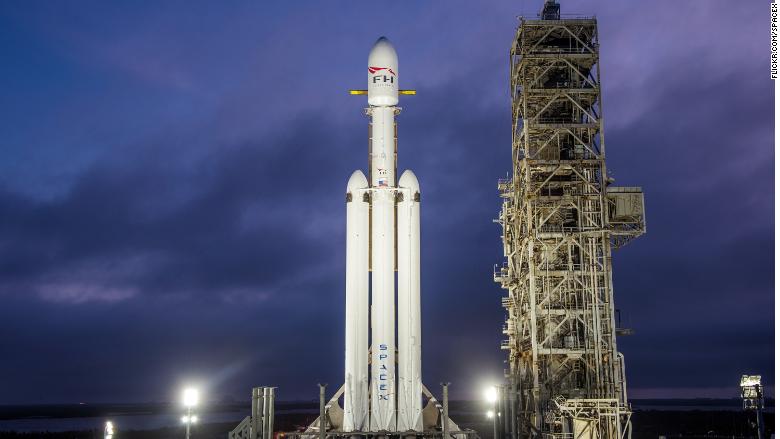
SpaceX says it has the most powerful rocket in the world. And it might soon be ready to fly.
After weeks of waiting, the company's massive new launch vehicle, Falcon Heavy, finally faced a critical test on Monday at Kennedy Space Center in Florida.
The exercise, known as a static test fire, is designed to test the Heavy engine's health, and collect data on its flight readiness. The rocket fired up its engines for about 10 seconds while keeping the rocket securely attached to a launch pad.
The company confirmed the test fire in a tweet.
Footage of the test fire on YouTube shows massive plumes of smoke swallowing the launch site while the engines give off a deafening roar.
The static fire is one of the last steps SpaceX must take before it can finalize a launch date for the Heavy's inaugural flight.
CEO Elon Musk reported on Twitter that the test fire "was good," and SpaceX will be "launching in a week or so."
When launch time does arrive, it will be a nail-biting moment. Musk said at a conference last year that he expects the test flight to fail.
If it does, Musk's personal Tesla Roadster will be among the wreckage.
Related: Elon Musk tweets photos of SpaceX's gargantuan new rocket
He said last month that he wants to send the car to "Mars orbit." SpaceX later clarified that the Heavy will aim for an orbit around the sun that will, at times, put the car the same distance from the sun as Mars.
And if the launch is successful? That will be a quite a show.
The Heavy has three rocket boosters at its base. After launch, SpaceX will attempt to guide all three of those boosters back to Earth.
SpaceX is the only rocket maker in the world that lands boosters after orbital launches. It does so in order to reuse the hardware on future missions, which helps bring down the price of a single launch.
They've recycled rocket boosters many times from Falcon 9 launches. That's the rocket SpaceX has used since 2012.
Related: SpaceX launch leaves ghostly glowing trail in the sky
But there's just one booster on the Falcon 9, compared to the Heavy's three.
The Falcon Heavy will also boast more than double the thrust of the most powerful rocket currently flying: The Delta IV Heavy, which is built by United Launch Alliance. That's a joint venture between legacy aerospace firms Boeing (BA) and Lockheed Martin (LMT).
The Falcon Heavy won't, however, be the most powerful rocket in history. That honor belongs to the Saturn V, the NASA rocket that was used for the Apollo moon landings and was retired in 1973.
The test fire occurred Wednesday after a series of delays as SpaceX worked to ensure the static fire would go smoothly. The test fire was potentially delayed even more thanks to the government shut down over the weekend. That meant government staff weren't around to oversee the test fire.
The rocket is, in fact, years overdue. SpaceX said back in 2011 that the rocket would be ready by 2013. Musk admitted last year that building the rocket was much more difficult than he initially anticipated.

